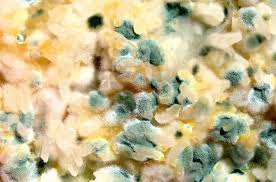Chronic Virus Is Often A Hidden Virus

Introduction to the Hidden Virus
In our previous post, we covered an introduction to viruses. We also explored one class of viruses: acute viruses and the resulting infections. Just to recap, acute viral infections follow a progression marked by a rapid onset, a short symptomatic phase and a quick resolution. Such infections include measles, influenza, ebola and the yellow fever virus. Besides acute viruses, we also have chronic viral infections. These infections are persistent, in that the virus is never cleared by our adaptive immune system, but remain in particular cells for the rest of the host’s life. Chronic viral infections will be the subject of this article, as we uncover the mechanisms and examples of persistent viruses.
Strategies for addressing the hidden virus and viral persistence
These are the various tactics employed by the infection to ensure the host cannot get rid of the viruses. The strategies include evading the immune response- through evolution, viruses have developed an assortment of mechanisms that inhibit the functioning of the innate, adaptive immune system (Maurice, 2004). Some viruses modify the ligands for antibodies, pattern receptors and T-lymphocyte receptors, thus avoiding recognition. They also avoid being detected by the T cells through targeting stages of antigen processing. Viruses could also avoid detection by suppressing their replication and going into latency. Other tactics include mimicking the host’s normal cells, attacking immunologically privileged organs (including the brain, eyes and joints), integrating themselves into the cell structure, control of genetic expression and continual adaptation to immune response.
Modes of chronic infection and of finding the hidden virus
Chronic infections could be of three kinds, depending on survival strategies. A chronic virus could either be chronic focal (continuous productive replication), chronic diffuse and latent infections. Let us take a closer look at each of these types. Often times hidden viruses go deep into our cells or go into latency as mentioned. These techniques allow the virus to easily evade our immune system.
Continuous Productive Replication
Even during active antiviral immunity, some viruses replicate by generating dangerous virions. They use antigenic viral proteins to assemble and release newer viruses, continuously stimulating antigen production by lymphocytes (Vladimir, et al, 2005). Some viruses are able to this stealthily, without alarming our immune response, resulting in a severe chronic infection.
Latency
This is a period where the virus’ replication and expression of antigens is silent, but can easily restart (John & Sissons, 2006). The host’s immunity, the virus and the type of cells infected all affect the latency. Viruses with latency choose to stay inactive instead of constant replication.
Chronic diffuse infections
These infect the body’s Endogenous Retroviral Elements. Thus, the virus remain persistent through encoding B & T cell antigens and shaping the T-cell repertoire (Moldofsky, et al, 1992).
Having seen how chronic viruses enforce persistence, the next section discusses three common chronic viral infections. Persistent viruses include the Herpes viruses (HSV-1, HSV-2, HV-3, HV-4, HV-5 and HV-6), Varicella zoster virus (VZV), Human Immunodeficiency Virus (HIV), Hepatitis C Virus (HCV) and the cytomegalovirus. Today, we shall examine HIV, HCV and VZV.
Human Immunodeficiency Virus (HIV):
This is a virus that attacks the immune system, weakening our disease fighting ability. An HIV attack could lead to development the Acquired Immune Deficiency Syndrome. The virus is found in the host’s fluids, such as semen, vaginal fluid, breast milk and blood. We can contract the virus through unprotected vaginal and anal sex, sharing sharps with the infected, blood transfusion and it could be transmitted from a mother to their infant during birth and breastfeeding.
After getting access into our bodies, HIV infects cells of the immune system, damaging it and reducing its ability to fight infections. The virus infiltrates immunity cells (CD4 +ve), which are white blood cells that protect us against pathogen attacks. HIV uses CD4 mainly for replication, and as these copies leave the CD 4, the lymphocytes die. When our CD 4 count drops below a certain level, our immune system stops working (Rima, et al, 1988). The virus has a latency period of up to 10 years, where one could appear healthy and experience no attacks.
Management of HIV first involves preventive measures. To reduce your risk of contracting the virus, you are advised to practice safe sex, avoid sharing sharp needles, and get to know you and your partner’s HIV status. Expectant mothers too need to get checked and have proper hospital delivery to prevent transmitting the virus to their unborn children. Post Exposure Prophylaxis (PEP) prevents infection if taken within three days of being exposed to the virus.
To Read About Blog Topic, Scroll Down
Want To Work With Our Clinic?
Do you have a chronic or mystery illness that no one has been able to help you with? Are you simply wanting to re-connect with a healthier version of yourself? It’s Time To Finally Feel Better!
Those already infected are enrolled into a treatment program. While there exists no cure for the virus, antiretrovirals help the infected live long, fulfilling and healthy lives. These drugs inhibit HIV replication, giving our immune system time to replenish itself. The infected are also urged to exercise regularly, maintain a balanced diet and to take annual flu jabs to prevent further attacks. Ignoring treatment results in a compromised immune system, increasing the risk of contracting fatal diseases like cancer.
Hepatitis C Virus
HCV is a blood borne virus that can cause both acute and chronic hepatitis infection. Hepatitis C is a disease of the liver, characterized by fatigue, fever, nausea, abdominal pain, jaundice and a decreased appetite. The virus is spread through sharing injection apparatus, reuse and insufficient sterilization of syringes and needles, and transfusion of unscreened blood. Less common modes of transmission include sexual contact and mother-to-child transmission.
In many individuals, our immune system takes care of the infection. Over the past few decades, interferon and ribavirin therapy completely cured subjects, though with nasty side effects (Christian, 1996). Recently, antiretroviral therapy has proven to be a more effective and safe. Preventive measures include proper hand hygiene when handling the infected, proper disposal of injection materials, proper testing of blood before transfusion and promoting safe sex.
Varicella zoster virus (VZV)
A species of herpes viruses known to only affect humans, VZV causes two diseases; shingles (herpes zoster) and chicken pox (varicella). These diseases share plenty of symptoms including fever, fatigue, a general ill feeling, headache and flu-like symptoms. They are both characterized by skin rashes which are itchy and surrounded by inflamed skin. Chicken pox rashes appear on the face, scalp and chest while shingles occur anywhere the virus lies dormant- the trunk, tongue, ears and eyes.
The following methods help treat and prevent the spread of VZV:
- Use of colloidal silver as an antiviral
- Proper pre-natal and post-natal care to ensure newborns are not exposed to the virus.
- Meditation, muscle relaxation, biofeedback and breathing exercises
- When infected and you fell itchy, experts recommend that you apply a cold compress on the affected area, trimming fingernails and covering hands with loose fitting mittens so they won’t scratch.
- Nutritional supplementation of Adenosine monophosphate (AMP) and Vitamins B12 & E
- Natural remedies include Cayenne, Chamomile and Licorice.
Epstein Barr Virus (EBV)
Infectious mononucleosis is a disease caused by a virus known as human herpes virus 4, or the Epstein-Barr virus (EBV). EBV is widely prevalent throughout the world and is estimated to infect at least 95%1 of the population. Most people get the EBV infection during the early stages of life, when they are still growing and developing as infants and children. Infectious mononucleosis, or mono as it is widely known can be asymptomatic (no symptoms) or it can present with nonspecific symptoms such as fever, sore throat, fatigue, headache and a swollen spleen (organ just above your stomach).
EBV is also correlated with potentially fatal diseases such as Hodgkin’s disease, B cell lymphomas and nasopharyngeal carcinoma1. In some cases, an EBV infection can result in Chronic Active EBV (CAEBV). This is a rare disease whose cause or precipitating factor is not known by scientists and doctors. It is more prevalent in Asia and South America though cases have been reported in the United States and Europe1.
EBV has been linked to autoimmune diseases such as systemic lupus erythematosus, rheumatoid arthritis and dermatomyositis among others due to its effects on the immune system. EBV infection and proliferation leads to CD8+ T-cell deficiency. This deficiency is the root cause of development of chronic autoimmune diseases. Autoimmune diseases can also arise from molecular mimicry, which happens when EBV attacks the B-cells of a particular organ and makes other B-cells attack that tissue or organ.
While most EBV infections happen in childhood and people usually recover quickly, the virus is not eliminated from the body once the infection clears. It remains hidden (latent) and in some cases may reactivate2. The virus can be transmitted through bodily fluids such as saliva when kissing, sharing drinks and food and contact with toys that children have drooled on2.
There is no vaccine and no specific treatment for an acute EBV infection. Treatment usually focuses on relief of symptoms as the body’s immune system deals with the virus. This means that you can expect to take a lot of fluids in order to stay hydrated and rest to deal with the fatigue.
However, patients with CAEBV will present with fever and problems with liver function as well as an enlarged spleen and low platelet numbers3. The treatment that has shown promise in the treatment of CAEBV is hematopoietic stem cell transplantation3, which is a complicated term for the replacement of the precursors4 of your blood cells with normal precursors that have not been affected by EBV.
Antiviral therapy has been found to be largely ineffective for the treatment of CAEBV1. The most effective treatment regimen involves a bone marrow transplant, which is the only way that you are going to get hematopoietic stem cells to rebuild your immune system without any ‘EBV tainted’ cells. The problem with this treatment is that patients with CAEBV may experience higher rates of complications, especially multi-organ failure5.
Other treatments of note include a combination of foods that support the immune system and antiviral and anti-inflammatory herbs that have been shown to be effective in fighting EBV infection.
Nutrients and Herbs that can help
- Animal protein
- Dark green leafy vegetables
- Sweet potatoes
- Blue and Black berries
- Nuts and seeds
- Zinc
- Selenium
- Curcumin
- L-lysine
- Nettle leaf
- Red Clover
- Cordyceps and Reishi mushrooms (immune-modulators)
- American Ginseng and Monolaurin have also been shown to have anti-viral properties.
When coupled with adequate sleep and stress reduction techniques such as yoga and meditation, these treatments can yield good results in fighting CAEBV.
In the future, it is hoped that there will be safer alternatives to the hematopoietic stem cell transplantation, such as targeting specific viral proteins unique to EBV and therefore eliminating the virus in the body. An analogy that would serve to explain this is imagining a team of highly trained Navy SEALs invading the body and using their prodigious sniper skills, killing of each EBV virus one by one. Treatment that has been focused on specific and unique EBV proteins is thought to be safer and more specific therapy for CAEBV1.
Other viruses common to human include: the measles virus, Human Herpesvirus 6 (HH6), the cytomegalovirus and enterovirus, which is known to cause chronic fatigue in humans.
Today we have discussed chronic diseases and mechanisms of the way the hidden virus can manifest. This information will come a long way in managing infections, and I hope it will help you spread awareness on the common persistent infections that could affect us.
Want help with your health? Book a free health evaluation call to see if you are a good fit for our clinic by clicking the button on the left below. If you are a clinician interested in advancing your training, please check out our online worldwide functional medicine training institute by clicking the button on the right below.
Book My Free Phone Health Evaluation Functional Medicine Certification for Clinicians
References
- Hilleman, Maurice R. “Strategies and mechanisms for host and pathogen survival in acute and persistent viral infections.” Proceedings of the National Academy of Sciences 101.suppl 2 (2004): 14560-14566.
- Ternovoi, Vladimir V., et al. “Productive replication of human adenovirus type 5 in canine cells.” Journal of virology 79.2 (2005): 1308-1311.
- Sinclair, John, and Patrick Sissons. “Latency and reactivation of human cytomegalovirus.” Journal of General Virology 87.7 (2006): 1763-1779.
- Whelton, C. L., I. Salit, and H. Moldofsky. “Sleep, Epstein-Barr virus infection, musculoskeletal pain, and depressive symptoms in chronic fatigue syndrome.” The Journal of rheumatology 19.6 (1992): 939-943.
- Kopelman, Rima G., and Susan Zolla-Pazner. “Association of human immunodeficiency virus infection and autoimmune phenomena.” The American journal of medicine 84.1 (1988): 82-88.
- Bréchot, Christian. “Hepatitis C ” Digestive diseases and sciences 41.12 (1996): 6S-21S.
- Gershon, A. A., et al. “Varicella-zoster virus.” Clinical virology Ed. 3 (2009): 451-473.
- Pediatr Transplant. Author manuscript; available in PMC 2010 Jun1. Published in final edited form as: Pediatr Transplant. 2009 Jun; 13(4): 393-396. Doi: 10.111/j.1399-3046.2008.01095.x PMCID: PMC2776035 NIHMSID: NIHMS156556 Jeffrey I. Cohen
- https://www.cdc.gov/epstein-barr/about-ebv.html
- https://rarediseases.info.nih.gov/diseases/9534/chronic-active-epstein-barr-virus-infection
- https://www.cancer.gov/about-cancer/treatment/types/stem-cell-transplant/stem-cell-fact-sheet
- Gotoh K, Ito Y et al. Clinical and virological characteristics of 15 patients with chronic active Epstein-Barr virus infection treated with hematopoietic stem cell transplantation. Clin Infect Dis. 2008;46:1525-34
Are You Suffering From A Chronic Illness?
Does your current health situation look like this…
- Do you feel that you have tried many things and either nothing works, or the treatment does not hold?
- Have you been told that there is nothing that can be done to reverse your illness and you just need to manage symptoms?
- Does your illness impact your work, your family, your happiness and your social life?
We specialize in finding answers and solutions for complicated chronic illness when people feel like they have tried everything. If this sounds like you, book a free call with us to see if we are the right fit for your health goals.
Dr. Miles has spoken for the following organizations:


















Responses